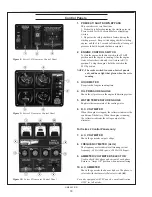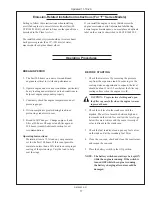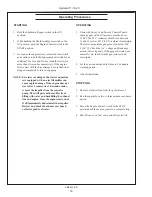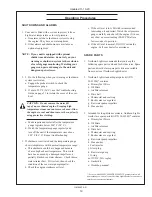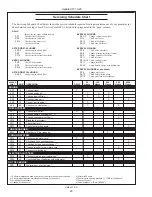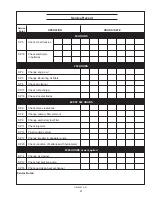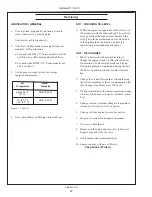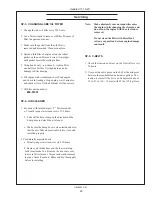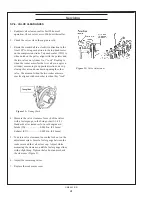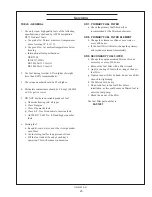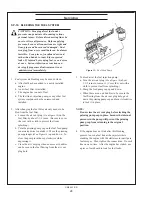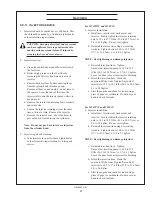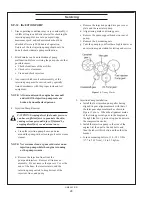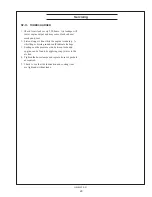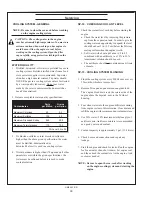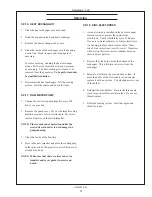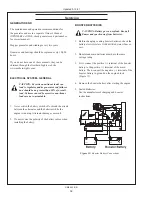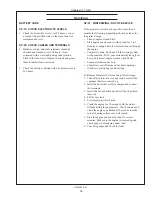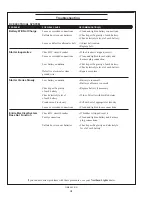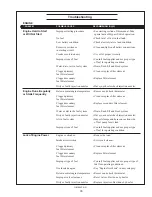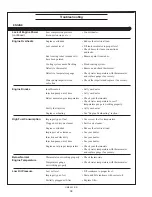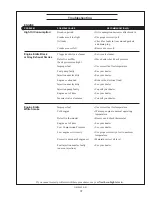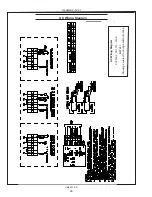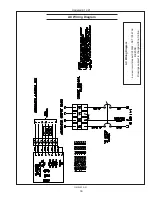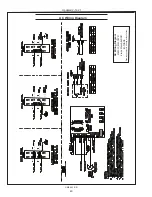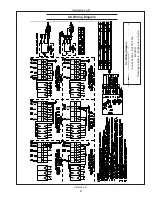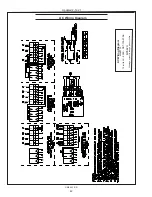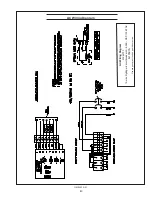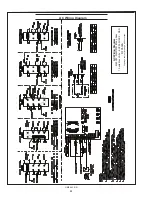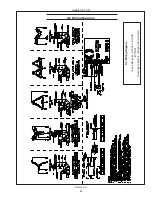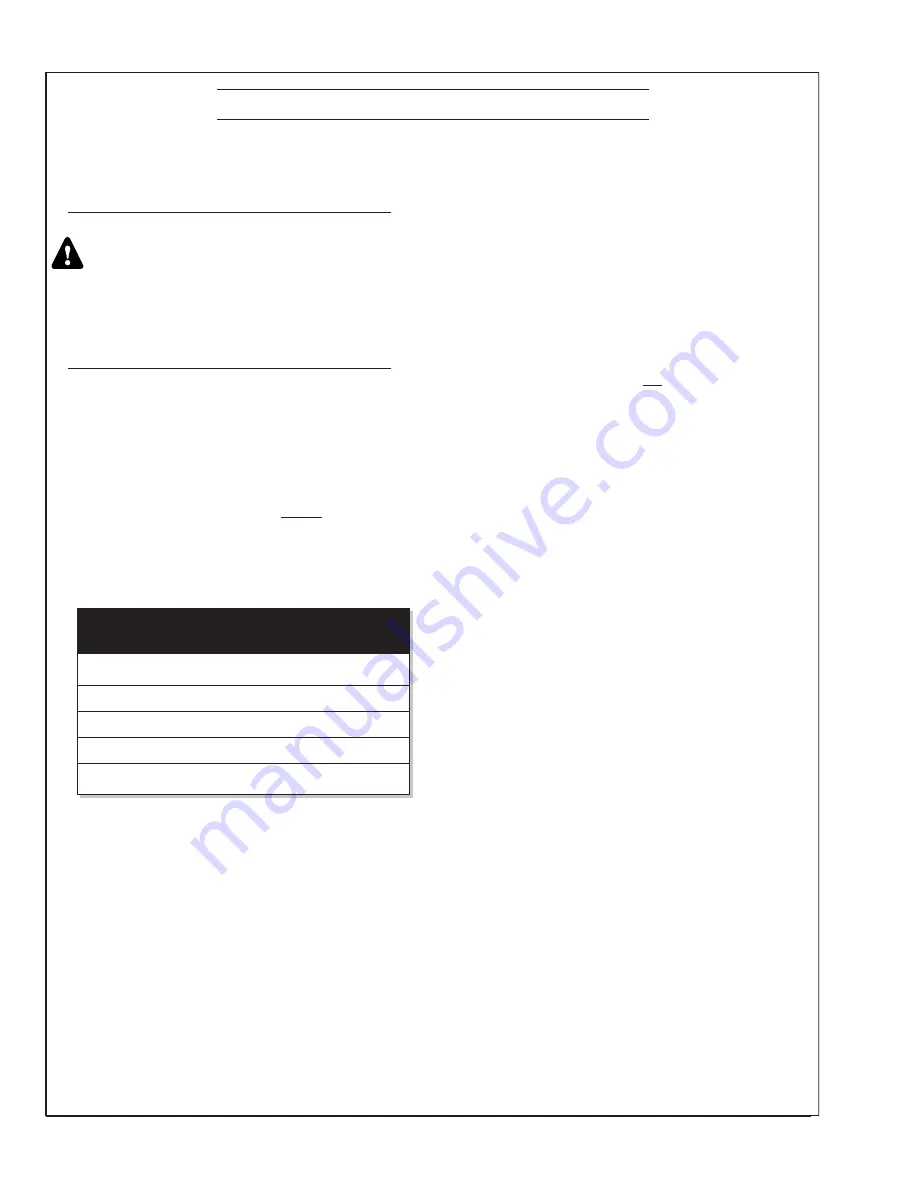
30
OM944F 5/21
SP-14. CHECKING COOLANT LEVEL
1. Check the coolant level each day before starting the
engine.
a.
Check the water level by removing the pressure
cap from the expansion tank. In order to give the
cooling water an opportunity to expand, the level
should be about 1 in. (2.5 cm) below the filler cap
sealing surface when the engine is cold.
b. Soft water with about a pH about 6.5 to 8.5
combined with an antifreeze in a 30% to 50%
(maximum) solution should be used.
c. The antifreeze should not contain amine, silicate,
or borate.
SP-15. COOLING SYSTEM FLUSHING
1. Flush the cooling system every 2000 hours or every
12 months, whichever comes first.
2. Remove
fill
cap and open drains on engine block.
The engine block drain is on the service side of the
engine above the dipstick, next to the flywheel
housing.
3. Pour clean water into the engine until water coming
from engine is clear of discoloration. Close drains and
refill
the engine with recommended coolant mixture.
4. Use 50% water / 50% (maximum) ethylene glycol
antifreeze mix. Antifreeze mixture is recommended
as a good year-round coolant.
5. Coolant capacity is approximately 3 gal. (11.4 liters).
6. Check hoses and connections and repair any
leakage.
7. Start the engine and check for leaks. Run the engine
for five minutes, then shut it down. Let engine cool,
and then check the coolant level in the engine. Add
coolant as needed.
NOTE: Be sure to open the sea-cock after working
on the engine cooling system and starting the
engine.
Servicing
COOLING SYSTEM - GENERAL
NOTE: Be sure to close the sea-cock before working
on the engine cooling system.
CAUTION: The cooling water in the engine
reaches extremely high temperatures. You must use
extreme caution when working on hot engines to
avoid burns. Allow the engine to cool before
working on the cooling system. Open the filler
cap carefully, using protective clothing when the
engine is warm.
WATER QUALITY
1. Distilled, deionized, soft water is preferred for use in
cooling systems. Bottled distilled water from a food
store or water supplier is recommended. Tap water
often has a high mineral content. Tap water should
NEVER
be put in a cooling system unless first tested
by a water quality laboratory. Do not use water
made by the reverse osmosis method unless it has
been PH neutralized.
2. Here are acceptable water quality specifications:
3. If chlorides, sulfates or total dissolved solids are
higher than the above given specification, the water
must be distilled, demineralized, or
deionized before it is used in a cooling system.
4. If total hardness is higher than 170 ppm and all other
parameters are within the given specifications, the
water must be softened before it is used to make
coolant solution.
Parts Grains
Contaminates
per Million per Gallon
Maximum Chlorides
40
2.5
Maximum Sulfates
100
5.9
Maximum Dissolved Solids
340
20.0
Maximum Total Hardness
170
10.0
PH Level 5.5 to 9.0
Содержание M944T3F
Страница 70: ...68 OM944F 5 21 Panel Wiring Diagram Panel Wiring Diagram S 1 Panel B A 12798B Updated 10 16 20...
Страница 71: ...OM944F 5 21 69 NORTHERN LIGHTS Panel Wiring Diagram Panel Wiring Diagram S 1B B Deutsch A 12791C...
Страница 72: ...70 OM944F 5 21 NORTHERN LIGHTS Panel Wiring Diagram Panel Wiring Diagram S 3B S 3C Panel B A 12790D...
Страница 73: ...OM944F 5 21 71 Panel Wiring Diagram S 3A B Deutsch B 10854D Panel Wiring Diagram Updated 3 31 21...
Страница 75: ...OM944F 5 21 73 NON CURRENT MODEL AC Wiring Diagram AC Wiring Diagram M944W3 and M30CW3 12 wire B 9723D...
Страница 79: ...OM944F 5 21 77 DC Wiring Diagram DC Wiring Diagram M944W3 24 VDC Isolated Ground C 6871A NON CURRENT MODEL...
Страница 83: ......

